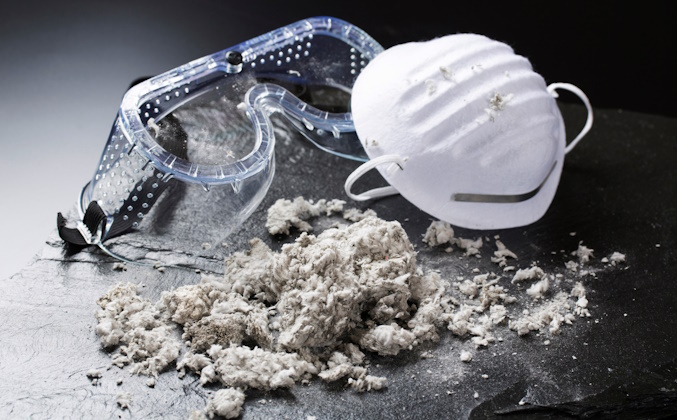Connecting With the Right Old Home Remodeling Team Makes a Difference In Outcomes
Older homes built in the 1940s and earlier are so full of charm, distinctive design elements, and character, it’s no surprise that people love them. Newly built homes just don’t have the same unique features, nor do they have interesting stories to tell about the families that treasured them and the city growing around them.
When it’s time to remodel these older homes, however, many homeowners feel stuck. They want dramatic remodels that showcase their home’s character, but they don’t want to find their budget diminishing each time their contractor finds something that requires a repair or remediation: lead, old pipes and wiring, and even asbestos, for example.
In fact, if homeowners have selected a “regular” contractor, they may find that even their expert isn’t up-to-speed on the kinds of challenges they uncover during the remodeling process. An old home renovation expert, like Architectural Craftsmen, however, can anticipate the kinds of things they can expect to find based on a home’s age, its past home remodeling history, its condition, and its architectural style. They’ll build these into the budget and plan for them so that uncovering them won’t derail the old home renovation.
Lead Pipes
In 1986, the federal government banned the use of lead pipe and solder in all new plumbing systems. However, homes built before then may still have lead pipes. Because lead pipes can last for up to 100 years, they were a popular material and may not be causing any outward issues, like leaks, in your home.
Lead pipes that carry water into your home and out of your taps should be removed and replaced with safer materials. Architectural Craftsmen will look at your home’s plumbing system before creating a detailed architectural design for all old home remodeling projects. If we find lead pipes, we will ensure that updating them is included in the project budget.
Knob-and-Tube Wiring
Knob-and-tube wiring was phased out in the 1940s. This wiring style was named such because of the ceramic knobs that supported tubes containing wires that carried electricity around the home. The tubes can become brittle and break, exposing live wires and becoming a fire hazard.
Knob-and-tube writing carries a lower supply of electricity, and it does not contain a ground wire, meaning it usually isn’t powerful enough for modern living. Most homes have likely been rewired to ensure a reliable power supply, but there are still homeowners who find knob-and-tube wiring during old home remodeling projects.
Because this type of electrical wiring is so easy to spot – and because homeowners are likely to experience electrical problems if they have it – Architectural Craftsmen can plan to upgrade it as part of our renovation.
Lead Paint
In 1978, the federal government banned lead paint for consumer use, but lead-based paint is still found in older homes. If it’s in good shape, it’s usually not a problem, but when it begins peeling or cracking, lead is released into the environment.
Only professionals should mitigate lead paint from a home. Architectural Craftsmen can prepare for the necessary removal of lead paint so that all surfaces of the home in our completed work are safe and free from lead dust.
Asbestos Siding, Roofing, or Insulation
In areas of the home we don’t disturb, you might find asbestos-containing construction materials, such as siding, roofing, and insulation, called vermiculite. Asbestos particles can cause mesothelioma, a type of cancer most commonly found in the lungs, stomach, heart, and other organs.
It wasn’t until mid-1989 that the government banned most asbestos-containing products, so homes built before then likely do contain asbestos building materials. If a home has asbestos shingles, siding, or insulation, then it will need to be removed – or remediated, especially if the renovation will disturb the materials.
An expert old home renovation contractor near you, like Architectural Craftsmen, can visually identify asbestos-containing construction materials and plan for remediation as part of the remodeling project. If we’re ever unsure whether a material is asbestos, we test for it before beginning construction to prevent illness in both our team and our clients’ families.
Asbestos Tile and Other Flooring Components
Asbestos tile and mastic to adhere them is also common in older homes. These 9”x9” or 18”x18” tiles, commonly made of vinyl, were often installed in basements and kitchens of older homes, even during remodels as late as 1989. These tiles can be left alone if they’re in good shape and will be covered by updated flooring.
Foundation Issues
Over time, old homes’ foundations can shift or crack, affecting the structural integrity of the home itself. Homes with foundation issues may have wet basements, obvious cracking in the basement walls, uneven floors, or damage to the plaster or drywall, particularly above door frames.
Most homes built before 1940 – and certain homes built during the midcentury – don’t have as stable foundations as the modern concrete used today. As such, it’s likely that older homes will require at least a little foundation work before renovations begin.
The Architectural Craftsmen team will look for signs of foundation issues when we walk through our clients’ homes early on in the process, and will collaborate with a structural engineer as needed to help clarify the amount of work a foundation requires before an old home renovation begins.
Remodeling an Old Home in Kansas City Requires Expert Help
Don’t embark on a major old home renovation project without experts paving the way. Architectural Craftsmen is Kansas City’s top home remodeler for distinctive historic homes built in the 1940s and earlier – not just because we have incredible old home renovation before and afters to share, but because we can wisely anticipate and plan for common issues that may arise during a project, and we have a Plan B and Plan C already mapped out.
See before and afters of our old home renovation projects on our website, and contact us when you’re ready to learn more about how we can transform your home while honoring its history.


